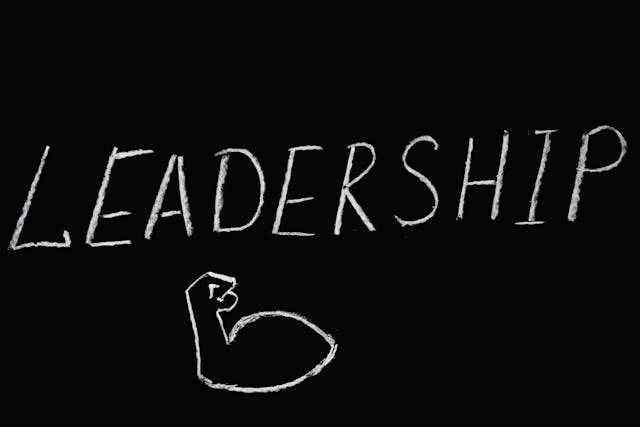The Role of Brave Leadership in Driving Sustainable Business Growth

In today’s rapidly changing business landscape, sustainable growth is no longer a choice—it’s a necessity. More than ever, companies are looking to brave leadership to guide their efforts in creating long-term, positive impacts for both the environment and society. With brave leaders at the helm, businesses can drive change that goes beyond profits, establishing a foundation for enduring success and inspiring those they lead. Courageous leadership plays a vital role in creating this vision of growth, one that values resilience, innovation, and responsibility.
What Is Brave Leadership?
Brave leadership is about more than being assertive or taking risks. It requires a blend of courage, emotional intelligence, and vision. Brave leaders are willing to challenge conventional norms and make tough decisions that may not immediately result in financial gain. They prioritize integrity, transparency, and a commitment to values, understanding that these traits are essential for sustainable growth.
Being a courageous leader also means having the strength to push for progress, even when it’s met with resistance. Such leaders don’t shy away from responsibility; instead, they embrace it, taking a stand for what is right for the planet and future generations. In this context, courageous leadership is instrumental in driving sustainable business growth.

The Link Between Brave Leadership and Sustainable Growth
Sustainable growth doesn’t just involve financial stability—it incorporates environmental, social, and governance (ESG) principles that help businesses thrive in a socially responsible manner. Companies led by brave leaders are more likely to implement policies that address climate change, ethical sourcing, and community engagement. Here’s how brave leadership connects to these pillars of sustainable growth:
- Environmental Responsibility
Brave leaders recognize the importance of protecting the environment. They acknowledge that addressing climate change and conserving resources is essential for long-term success. Brave leadership drives companies to adopt green initiatives, reduce their carbon footprint, and pursue renewable energy sources, even if these choices are initially more costly. By embracing environmental responsibility, businesses can appeal to eco-conscious consumers and build a reputation for integrity and accountability. - Social Impact
In an era of increased scrutiny, companies are expected to positively impact society. Brave leaders promote initiatives that enhance social welfare, such as fair labor practices, diversity, and community development. They understand that true success lies in uplifting those around them, both within their organizations and in society at large. Brave leadership fosters an inclusive workplace where employees feel valued, leading to increased productivity and loyalty. Furthermore, socially responsible businesses attract consumers who prioritize ethics, contributing to sustainable growth. - Governance and Ethical Standards
Courageous leaders uphold the highest ethical standards in decision-making, setting an example for the entire organization. They resist the temptation to cut corners for short-term gains, recognizing the importance of maintaining trust and transparency with stakeholders. By implementing solid governance practices, brave leaders help establish a culture of accountability and integrity, essential for a company’s long-term success.
Characteristics of Brave Leaders Driving Sustainable Growth
Brave leaders are defined by certain key traits that help them champion sustainable growth in their organizations. These characteristics enable them to tackle challenges and remain steadfast in their commitment to long-term goals.
- Visionary Thinking
Brave leaders have a clear vision of a sustainable future, which they communicate effectively to their teams. They see beyond immediate profits and understand the broader impact of their actions. With this perspective, they can inspire others to embrace sustainable practices and work toward a common purpose. - Resilience and Adaptability
Brave leaders understand that setbacks are part of any transformative journey. They possess the resilience to navigate challenges and the adaptability to respond to new developments. This mindset allows them to drive change, even in turbulent times, ensuring that their organization stays on track toward sustainable growth. - Courage to Innovate
Sustainable growth often requires businesses to innovate, finding new ways to reduce waste, enhance efficiency, and improve products. Brave leaders encourage experimentation and support new ideas, even if they involve a degree of risk. By fostering a culture of innovation, courageous leaders position their companies at the forefront of sustainability. - Commitment to Accountability
Brave leaders hold themselves and others accountable for the organization’s impact on society and the environment. They establish clear goals for sustainable practices, monitor progress, and communicate openly with stakeholders about challenges and achievements. This commitment to accountability builds trust and reinforces the company’s dedication to sustainability. - Empathy and Compassion
Brave leaders understand that sustainability is not just about policies; it’s about people. They lead with empathy and compassion, recognizing the importance of fostering a supportive work environment. By prioritizing employee well-being, they cultivate a motivated and loyal workforce, which contributes to sustainable business success.
The Role of Brave Leadership in Organizational Culture
Brave leadership has a profound impact on organizational culture. When leaders embody courage, integrity, and empathy, they set a standard for others to follow. This culture of bravery inspires employees to take initiative, think creatively, and contribute to sustainable goals. It encourages open communication, allowing team members to voice their ideas and concerns without fear of repercussions.
A workplace that embraces brave leadership attracts and retains talent. People want to work for a company that values sustainability, transparency, and ethical practices. When employees feel that their work contributes to a greater purpose, they are more engaged and committed. This commitment fuels productivity and innovation, which are essential for long-term growth.
Real-World Examples of Brave Leadership Driving Sustainability
Many companies have embraced brave leadership in their quest for sustainability. Patagonia, for instance, has set a high standard by prioritizing environmental responsibility and ethical sourcing. Under brave leadership, they have taken bold stances on issues like climate change, even donating a portion of profits to environmental causes. This courageous approach has not only earned them a loyal customer base but also positioned them as a leader in sustainable fashion.
Another example is Unilever, which has integrated sustainable practices into its business model. Led by courageous leaders, the company has committed to reducing plastic waste and carbon emissions, while supporting social welfare initiatives globally. These actions demonstrate how brave leadership can drive growth, attract conscious consumers, and create a lasting positive impact.
Overcoming Challenges in Brave Leadership for Sustainability
Brave leaders often face resistance when driving change, especially when it challenges long-standing practices. Sustainability initiatives can require significant upfront investment, which may meet with skepticism from stakeholders focused on short-term gains. Brave leaders must navigate these challenges with patience and resilience, communicating the long-term benefits of sustainable practices. By focusing on data, clear goals, and consistent results, they can build stakeholder confidence and secure the support needed to drive sustainable growth.
Another challenge is maintaining momentum. Sustainability is a continuous journey, requiring ongoing commitment and resources. Brave leaders must be willing to adjust their strategies as needed, keeping pace with advancements in technology and changing market demands.
Conclusion
Brave leadership is essential for driving sustainable business growth in today’s world. Courageous leaders bring the vision, resilience, and integrity needed to foster change that benefits both the organization and society. By prioritizing sustainability, they create a business model that not only adapts to challenges but also flourishes amid them. With brave leadership guiding sustainable efforts, businesses can make a meaningful difference, proving that growth and responsibility can go hand in hand.










